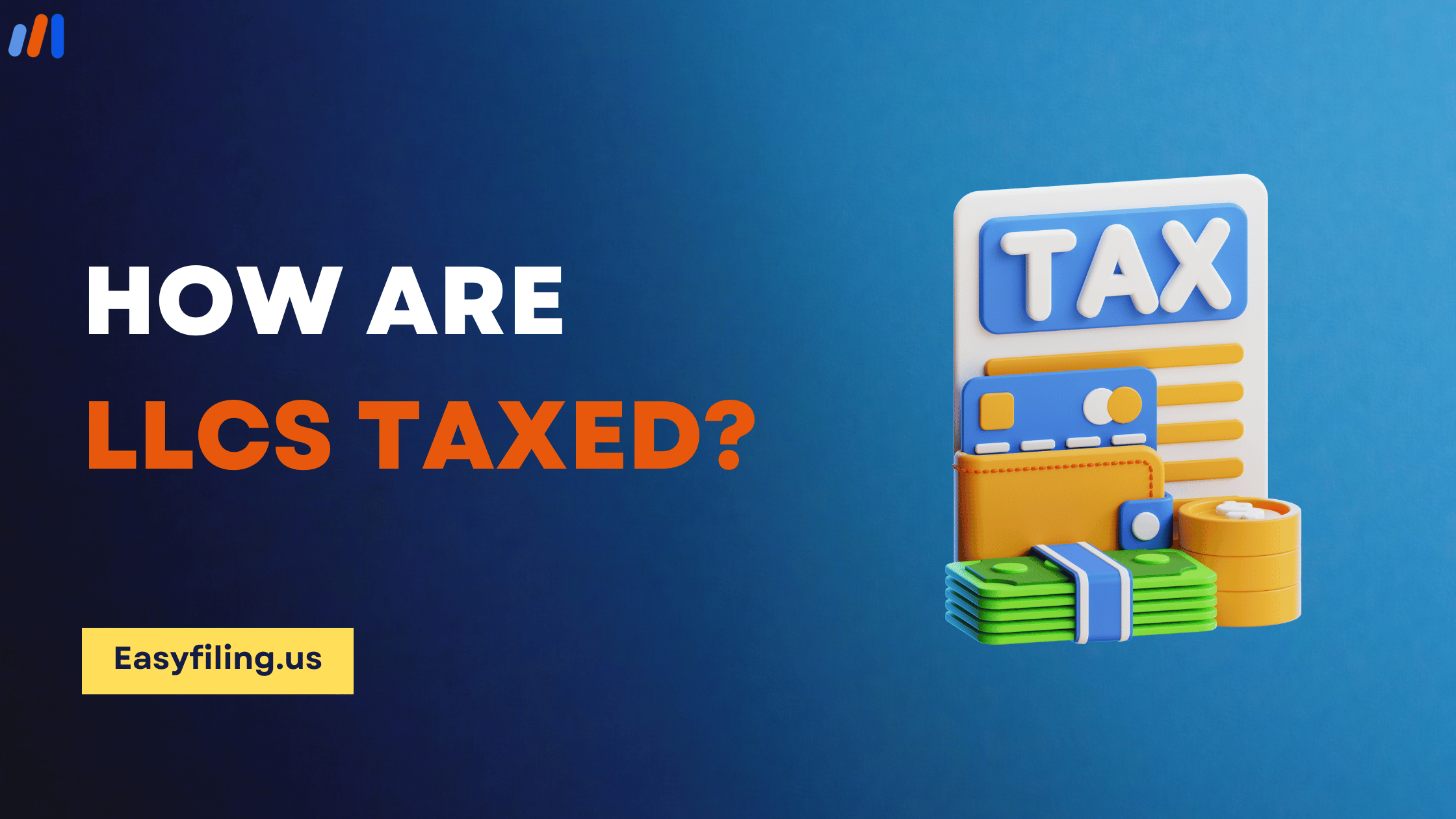When foreigners think of expanding or setting up their business within the borders of the United States, the U.S. tax system is traditionally viewed as complex or intricate.
With regards to taxation, indirect taxes are perhaps the most neglected sector despite them being absolutely vital, considered a subcategory of tax that impacts pricing, compliance, and operations.
Despite the fact that indirect taxes are often part of the transactions, they can have a substantial impact on how you conduct business, your business strategy, and your legal obligations.
This handbook covers everything foreign entrepreneurs need to know about indirect taxes, their importance, indirect tax compliance, and everything in between to successfully operate a business in the United States.
What Are Indirect Taxes?
Indirect taxes are levies placed on the sale or use of a good or service, either supplied to the market, often collected by an intermediary (generally a business) from the end user.
As opposed to direct taxes like income tax or corporate tax paid outright by individuals or corporations, indirect taxes are incurred as a fee attached to a product or service.
If you are a foreign entrepreneur seeking to establish a venture in the United States, you need to be cognizant of indirect taxes because they will determine your product pricing strategies, customer relations, filings with tax authorities, and more.
You are responsible for paying these taxes through filings, irrespective of the burden being borne by the customer.
Types of Indirect Taxes
Indirect taxes vary with different states and industries in the U.S. because the U.S. has a decentralized system of tax collection. As for foreign business owners, they should be aware of the following categories of indirect tax:
- Sales Tax
- This type of indirect tax is the most prevalent in the United States. It is levied on the sale of tangible personal property and occasionally services. In the issue of sales tax, each state has a different set of rules. Businesses that have an economic nexus—that is, a minimum range of sales or transactions in a certain state—are required to collect and pay sales tax even if they don’t have a physical location there.
- Excise Tax
- Certain indirect taxes are levied on specific goods, and these types of taxes are known as excise taxes. These affect products like alcohol, tobacco, fuel, and airline tickets. These are used particularly to control the consumption of goods or to raise money for certain public services.
- Customs Duties
- These are indirect taxes that are put on items brought into the United States. If your aim is to purchase products from other countries to sell into the U.S., then knowing customs duties is imperative in figuring out your total landed cost.
- Value-Added Tax (VAT) – International Understanding
- For foreign entrepreneurs, it is important to understand that the U.S. does not use a VAT system like many other countries. However, indirect taxation, such as sales tax, serves the purpose of a consumption tax at various levels.
Let’s go through a hypothetical example:
You have a business selling electronic goods online in the U.S. as a foreign investor. A client from Texas orders a Bluetooth speaker that is priced at $100.The speaker is then shipped to Texas, which has a combined sales tax of the state and local government at 8.25%.
So sales tax would be $8.25.As a speaker retailer in Texas, you pay $8.25 in sales tax, which equals $108.25.As a company, you have to then refund the Texas Comptroller’s office during your accounting window.
If the item is coming from China, it may incur customs duty at the port of entry. Furthermore, replacement batteries may subject you to hazardous materials fees, or Excise-type materials may be added if the product contains these items.
In this scenario, indirect taxes are levied and collected separately at different stages, with the business being liable for each one of them.
Features
Comprehending its fundamental characteristics will help you navigate its complexities:
- Cost Pass-On: The burden falls on the consumer, with businesses collecting the payment as well as the tax.
- Levies Revenue: Imposed on goods and services, instead of income or profit.
- Markup: A company will usually add the tax within the final price of goods, making it unnoticeable to the public.
- Strict Monitoring: Sellers have to track, report, and remit taxes routinely.
- Directed By The State: States in the U.S. have control over indirect taxes, with the exception of VAT.
Advantages
Establishing indirect taxes has easier compliance procedures both for the business community and the economy as a whole:
- Effortless Collection: Avoids resistance as taxes are only collected at the point of sale.
- Extensive Taxpayer Base: Generates income irrespective of one’s salary.
- Behavioral Incentives: Excise taxes help limit negative behaviors like smoking and sugar consumption.
- Reliable Revenue: Guarantees consistent government funding.
- Expense Planning: Helps businesses budget effectively as taxes are built into product pricing.
Disadvantages
Foreign business owners must take the following drawbacks into account:
- Regressive Effect: Indirect taxes claim a larger share of income from lower-income consumers.
- Added Cost: Increases product cost, potentially reducing competitiveness.
- Non-Homogeneous Rates: Vary across jurisdictions.
- Double Taxation Risk: Without strategic tax planning, one could be taxed both in the U.S. and the home country.
The Role of Indirect Taxes in the Economy
Here’s how indirect taxes affect the U.S. economy:
- Fund Services: Help support essential services like healthcare and education.
- Changing Behavior: Excise taxes discourage consumption of harmful products.
- Shield Against Pricing: Customs duties protect domestic industries.
- Support Local Government: Provide critical funding to city and county governments.
Strategies for Simplifying Indirect Tax Compliance
- Utilize Tax Compliance Software
- Use tools like Avalara, TaxJar, and Vertex to automate filings and reduce errors.
- Retain a U.S. Tax Advisor
- Consultants experienced in cross-border taxation ensure accurate compliance.
- Monitor Your Nexus
- Track sales to determine if you owe taxes in specific states.
- Conduct Regular Audits
- Keep organized records of all transactions to prepare for state audits.
- Stay Informed on Regulation Changes
- Subscribe to newsletters and set alerts for updates from tax authorities.
Indirect vs. Direct Taxes
| Basis of Comparison | Indirect Taxes | Direct Taxes |
|---|---|---|
| Paid By | End-user | Person or Organization |
| Examples | Sales tax, customs duties, excise | Income tax, corporate tax |
| Visibility | Included in the price | Declared and filed |
| Governance | State and local | Federal and state |
| Collection | At the point of sale | At the tax period |
An effective tax strategy involves understanding and planning for both types of taxes.
Frequently Asked Questions
Q: Do foreigners need to pay sales tax in the U.S.? A: Yes, if your business surpasses economic nexus thresholds in any state.
Q: How are customs duties collected? A: Usually through U.S. customs brokers or directly during import.
Q: Is indirect tax registration necessary? A: Yes. You’ll need a U.S. business entity (like an LLC), a tax certificate, and a tax ID to comply.
Additional Resources
- IRS.gov – U.S. federal tax guidance
- StateTaxFacts.org – Up-to-date tax rules by state
- Avalara.com – Tax automation software
- SBA.gov – U.S. Small Business Administration advice for foreign-owned companies
Key Takeaways
- Indirect taxes are crucial for pricing, compliance, and strategy in U.S. operations.
- Foreign businesses must understand sales tax, excise tax, and customs duties.
- Strategic planning and compliance software ease the burden of managing indirect taxes.
- Differences between direct and indirect taxes should guide your tax framework.
Foreign entrepreneurs can set up their U.S. business with confidence and legal clarity.
Further Reading
- IRS: Grasping Taxes
- U.S. Customs And Border Protection
- TaxJar: Sales Tax Nexus
- Avalara Indirect Tax Compliance Tools
Main Points
- Indirect taxes are an important matter of business compliance in the U.S, especially for foreign-owned businesses.
- These taxes include sales tax, excise tax, customs duties, etc., which the seller must collect and remit.
- Lack of management of indirect taxes is likely to result in penalties, audits, and loss of goodwill.
- Effective automation, professional assistance, and accurate filing greatly enhance compliance due to less manual work.
- Knowing the difference between indirect and direct taxes is favorable to entrepreneurs from other countries.
Prepared to Launch Your Business in the U.S.?
At Easy Filing, we take pride in assisting foreign entrepreneurs with the formation of their U.S. businesses, obtaining EINs, confidently managing their tax obligations (including indirect taxes), and guiding them all the way.
Let us ease you through the system so that we can help you, legally and successfully, launch in the U.S.
File Your LLC Today
25$ off with a coupon
Lock in EasyFiling's transparent rates and get lifetime compliance support at no extra cost.
Get Started Now







